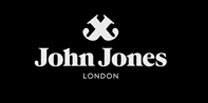Richard Galpin Elevation
Hales Gallery, London
www.halesgallery.com
Private view: Thursday 19 March 2009 6-8pm
Exhibition dates: 20 March – 2 May 2009
Any stumbling attempts towards a utopian future involve decisions about the destruction or adaptation of existing urban fabric - whether to conserve or wipe the slate clean. The memory imbued in the fabric of previous structures can be erased, preserved, or adapted. In Richard Galpin’s work these cyclical processes are echoed and re-enacted, with present day metropolises reworked into new forms and futuristic structures.
This exhibition shows the latest development of Galpin’s unique working process (that of cutting away with a scalpel at the surface emulsion of his own photographs). Here Galpin subjects his photographs of London and New York to a cubo-futurist vocabulary influenced by the early 20th century wartime studies of British artists Edward Wadsworth, C. R. W. Nevinson, and Graham Sutherland. Through combining this aesthetic with the reflective surfaces of contemporary cities, the works have manifested a shard-like angularity, reminiscent of science-fiction illustration, the architectural drawings of Lebbus woods, or the sculptures of Lee Bondecou. The anonymous utopian landscapes of Galpin’s previous works have given way to something more dystopian and post-apocalyptic. These are future ruins, or perhaps rogue states built from the detritus of 21st century life.
For the first time in Galpin’s work, we see the artist imposing a geometric form from which to structure the selection and removal of photographic information. The use of a diamond, circle or ellipse as a central axis creates a visual push and pull between the flatness of the incised form, and the lens perspective of the photograph. This projection of geometry into the space of the photograph results in a complex interplay of perspectives and dimensions. Galpin says: “My aim is always to get the works to function both as a representation of the ‘real’ world (albeit severely restricted), and a fabricated alternative reality - to get both these elements to coexist simultaneously within the work. Or, at the very least, for the viewer to feel that these dual dimensions are just beyond reach.”











No comments:
Post a Comment